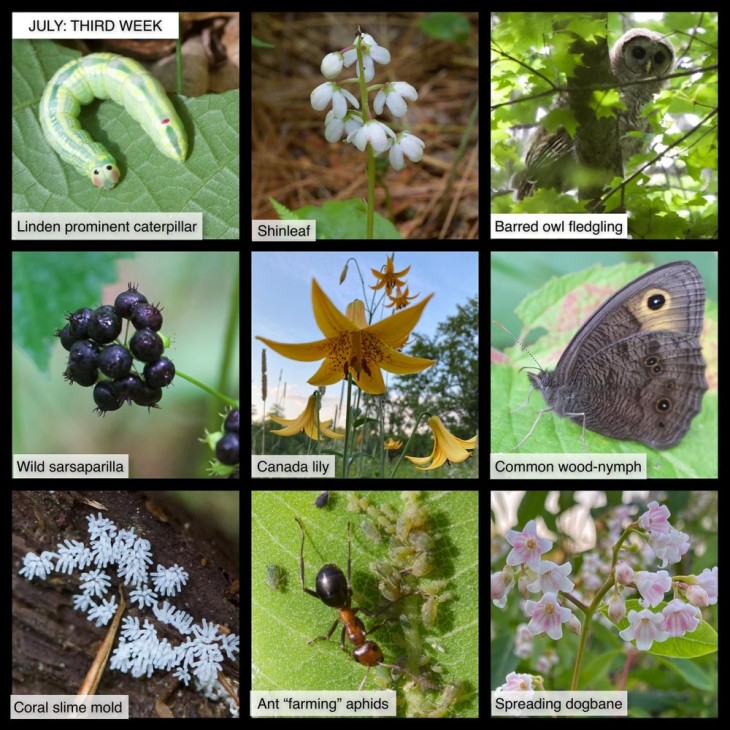This week in the woods, in between storms, we’ve been walking along foggy trails, and wondering … were red-eyed vireos always this loud? Although wet air supposedly dampens sound, summer’s most profligate loudmouths seem determined to compensate by perching low in the forest canopy and calling out their, “Here I am, where are you?” even more loudly and frequently than usual. An estimate from Cornell’s All About Birds red-eyed vireo profile, which more politely describes the bird as a “tireless songster,” estimates that a single one of these birds may call over 20,000 times in one day. What’s also remarkable about red-eyed vireos, is how hard they can be to see, despite making all that sound. (They’re a lot like tree frogs that way.) Here's an archival photo of one that had just snagged a small insect, taken July 18, 2020.
American Caesar mushrooms are popping up all over the woods, right on schedule with previous years. We counted 16 during one rainy walk; here are archive photos that show how the mushrooms originally look like big red eggs when they emerge from their protective coverings (universal veils), and how they later take on a parasol appearance. Unlike many of its Amanita kin, American Caesar is considered edible, and indeed may get its name from its close relationship to a mushroom that was a popular food among the ancient Romans … but that said, (a) it’s never a great idea to eat a wild mushroom unless you really, truly can identify it (b) it’s probably also not a great idea to take culinary guidance from people who used lead cooking vessels. Best to enjoy American Caesar for its good looks and leave its eating to the wildlife.
In a world of confusing and odd insect names, we appreciate red milkweed beetles, which are red beetles that feed on milkweed. These pretty insects use the same trick that monarch caterpillars do, to avoid having their mouthparts glued shut by milkweed’s sticky defensive latex; before feeding in an area, they bite off the latex conduits to that part of the plant tissue.
Speaking of confusing and odd insect names…although the Virginia ctenucha does indeed live in Virginia, most of its range is farther north, all the way up to Labrador. We’ve found several specimens of this large, day-flying “wasp moth” nectaring on milkweed blooms this week. Although it can look dull in low light, it’s really beautiful when the sun shines. Its body is metallic blue, which contrasts with the blaze orange on the moth’s head and shoulders. Virginia ctenucha caterpillars have several plant hosts, including irises, and the name “ctenucha” (Greek derivation, “having a comb”) relates to the adult moths’ comb-like antennae.
Finally, we’ve noticed an abundance of goldenrod rosette galls in the past few weeks. Although they’re easy to mistake as actual flowers, they’re actually the goldenrod equivalent of witch’s brooms in trees – an invading organism – in this case a tiny fly – subverts the plant’s normal growth pattern for its own purposes by means of clever chemical secretions. Female goldenrod gall midges lay their eggs in a developing leaf, and as the grub develops, the plant generates a flowery ball of leaf tissue around it that serves as a protective hideout from birds and other predators. Note: not just the flies benefit from this. We often find spiders lurking on these galls, presumably because they serve as good ambush blinds.
What have you noticed in the woods this week? Submit a recent photo for possible inclusion in our monthly online Reader Photo Gallery.


